Original | Odaily Planet Daily
Author | Nan Zhi
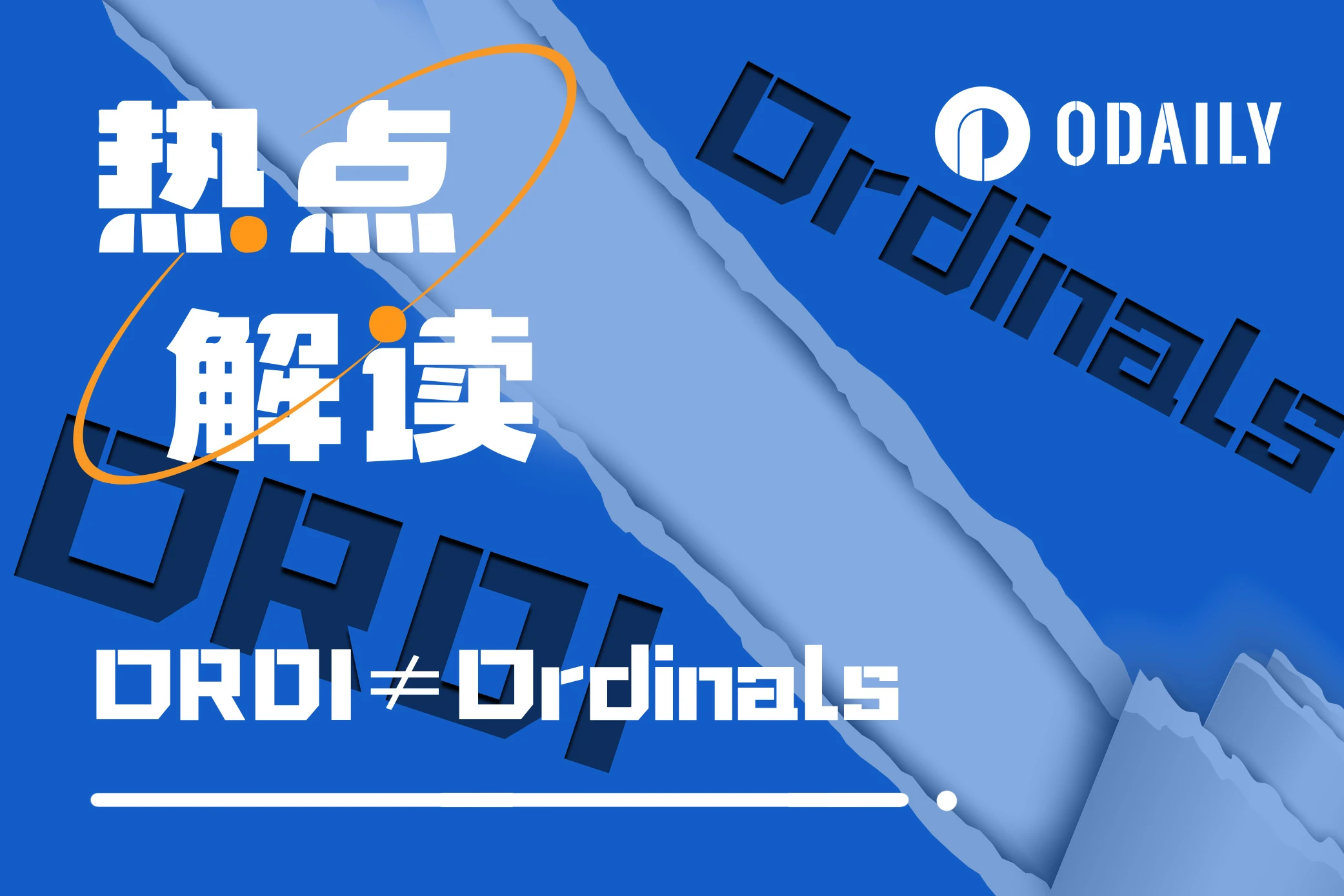
Yesterday, Binance announced the launch of spot and contract trading for the BRC-20 token ORDI. Upon the news, the price of ORDI surged from 7.4 USDT to over 12 USDT at one point. Today, it once again rose to over 14.5 USDT, temporarily falling back to 13.6 USDT, with a 24-hour increase of approximately 83%.
However, in the early hours of today,Ordinals protocol founder Casey posted on X platform, requesting Binance to remove some links pointing to Ordinals in the ORDI token information interface, and emphasizing that ORDI is not associated with Ordinals, The Open Ordinals Institute, or The Ordicord.
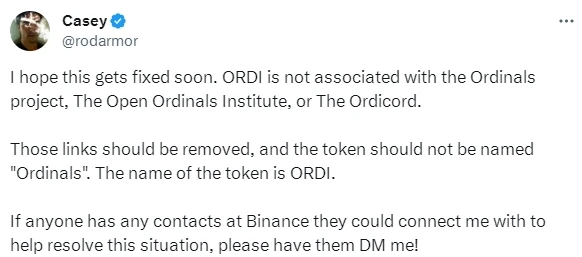
Information on the Binance official website shows that the ORDI "official website link" points to ordinals.com, the "white paper" points to docs.ordinals.com, and the "blockchain browser" points to ordiscan. As shown below:
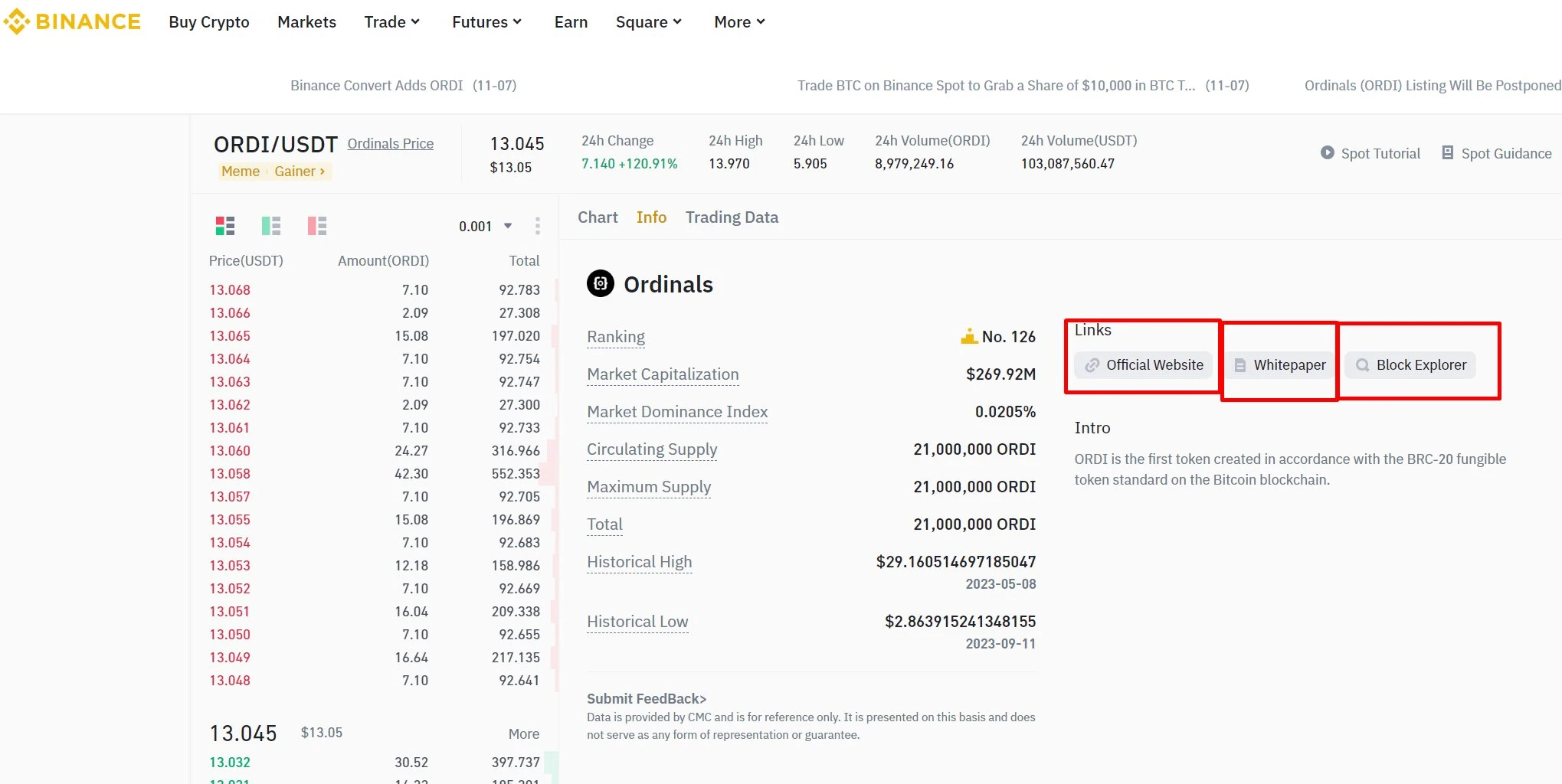
Some users in the community who are not familiar with Ordinals and ORDI mistakenly believe that the ORDI official team is unwilling to list on Binance and see it as negative news.
In fact, the concept, promotion, and development of the ORDI token are not strongly associated with the Ordinals protocol, and Casey has long been against BRC-20. Odaily will reveal the relationship and story between them in this article.
Concept Analysis
Ordinals
The Ordinals protocol was proposed by software engineer Casey Rodarmor and officially launched on the Bitcoin mainnet on January 30, 2023. The protocol defines an order for each sat (the smallest unit of Bitcoin) and uses SegWit and Taproot technology to allow content to be "engraved" on the Bitcoin network and bound to specific numbered sats, enabling them to be transferred and traded. The engraved content mainly includes images, text, videos, and audio.
BRC-20
BRC-20 is a token standard proposed by Domo on March 9, 2023, based on the Ordinals protocol, to engrave a specific piece of text on the blockchain and "treat it as" a token. Its standard format is as follows:
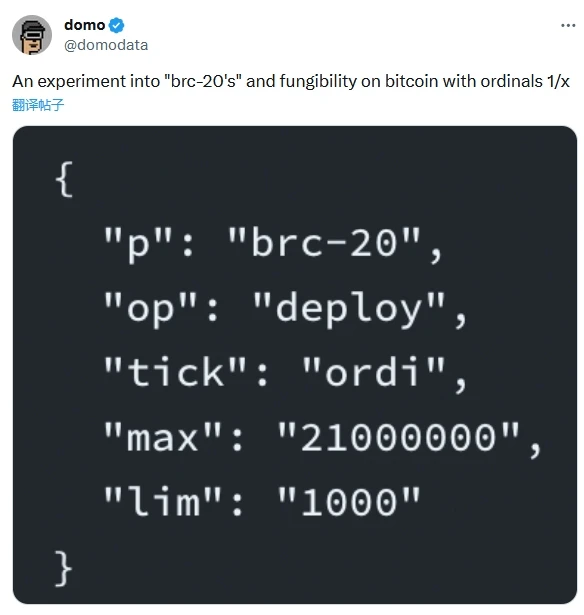
In short, ORDI is the first token of BRC-20, created by Domo, and BRC-20 uses the Ordinals protocol. The founder of the Ordinals protocol is Casey. Casey's request for Binance to delist the information expresses the idea that the "same-name" token should not be linked to the underlying protocol itself.
"I Want to Clean BRC-20 Out of the World"
Casey has long been against the existence of BRC-20, believing that BRC-20 generates "garbage UTXO" and occupies space in the Bitcoin network. There are also potential security issues.
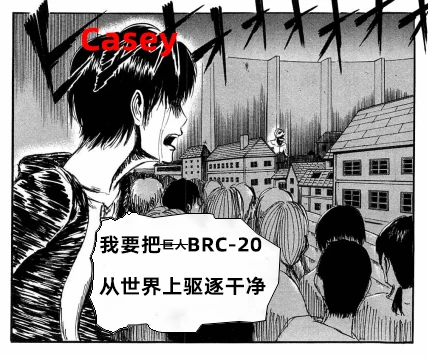
"Garbage" UTXO Theory
On September 1, Casey stated: "What I want for Christmas is for Degens to discover Taproot Assets so they can stop minting BRC-20."
On September 24, after 6 months, the sats minting progress reached 100%. On that day, Casey stated: "BRC-20 sats tokens have a limit of 21 million tokens, with a limit of 1 token per minting, which results in 21 million transactions, (Odaily note: the cost of minting sats exceeds 21 million USD, requiring 21 million mintings), and a large amount of memory pool congestion, ultimately completing the minting."
Attempt to Replace
On September 26, Casey proposed a new protocol based on the Bitcoin network, called Runes, as an alternative to BRC-20. Rodarmor stated that Runes is a UTXO-based protocol that naturally adapts to Bitcoin and promotes the minimization of UTXO sets by avoiding the creation of "garbage UTXO."
On October 15, Casey stated on X platform: "You can't even understand the delightful, artisanal shitcoining that Runes will bring to Bitcoin." A community user replied to this tweet: "Does anyone know where I can read more about Runes? If it's a process similar to brc-20, their performance won't be good."
Casey responded: "What don't you like about the process of BRC-20?" (meaning aimed at improving BRC-20).
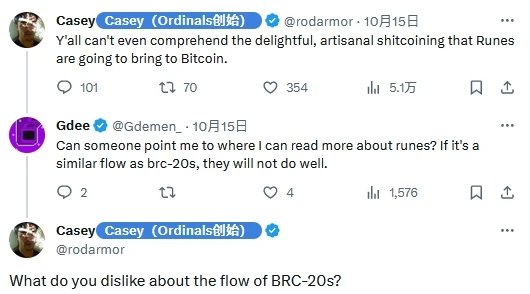
(Additional reading: "Replacing BRC-20 to Activate BTC Ecology? Ordinals Founder Introduces New Protocol Runes")
Security Issues
On September 23, Casey suggested that attackers could lock the balance of a victim's address by minting "transfer inscriptions" and sending them to the victim's address.
On November 4, BRC-20 founder Domo released a security improvement proposal, adding the fraction function to address the issue raised by Casey. Domo stated that, given the principle of simplicity is the basis of the BRC-20 standard, the proposal to introduce additional core functions was carefully considered and not mandatory. So far, there is almost no evidence that these "attacks" have occurred.
ORDI Unaffected
At noon today, the information on the Binance official website shows that the content in the ORDI "currency information (Info)" interface has been changed, removing the links pointing to the Ordinals protocol and adding the description "ORDI is the first token created according to the BRC-20 token standard on the Bitcoin blockchain."
As of 3 p.m., ORDI remains above 13 USDT, with a 30% increase today, unaffected by this event. Casey's "dream" is still to be realized.
免责声明:本文章仅代表作者个人观点,不代表本平台的立场和观点。本文章仅供信息分享,不构成对任何人的任何投资建议。用户与作者之间的任何争议,与本平台无关。如网页中刊载的文章或图片涉及侵权,请提供相关的权利证明和身份证明发送邮件到support@aicoin.com,本平台相关工作人员将会进行核查。




